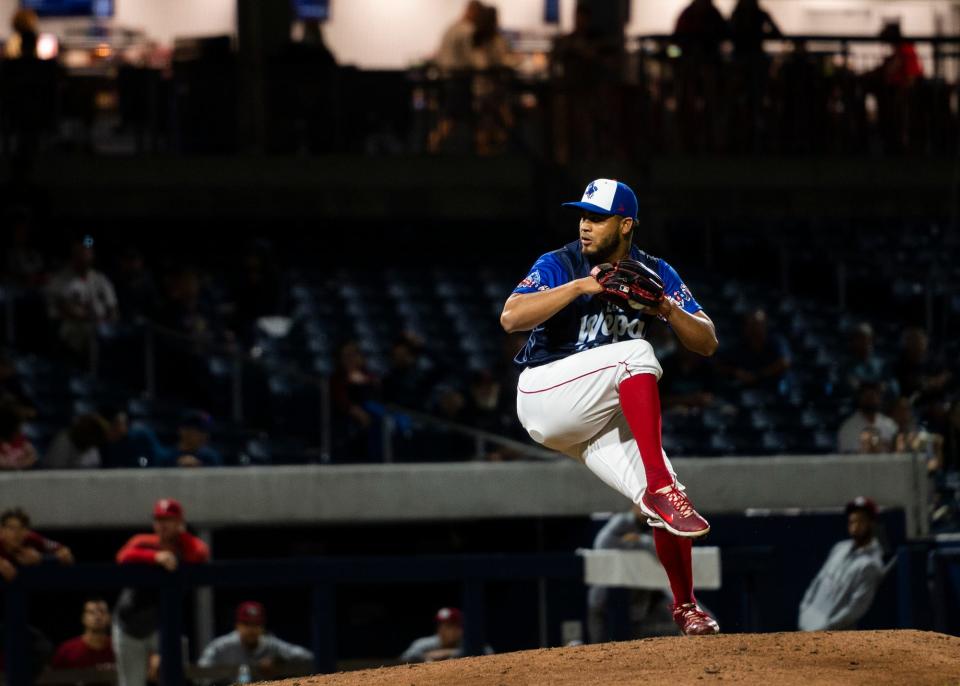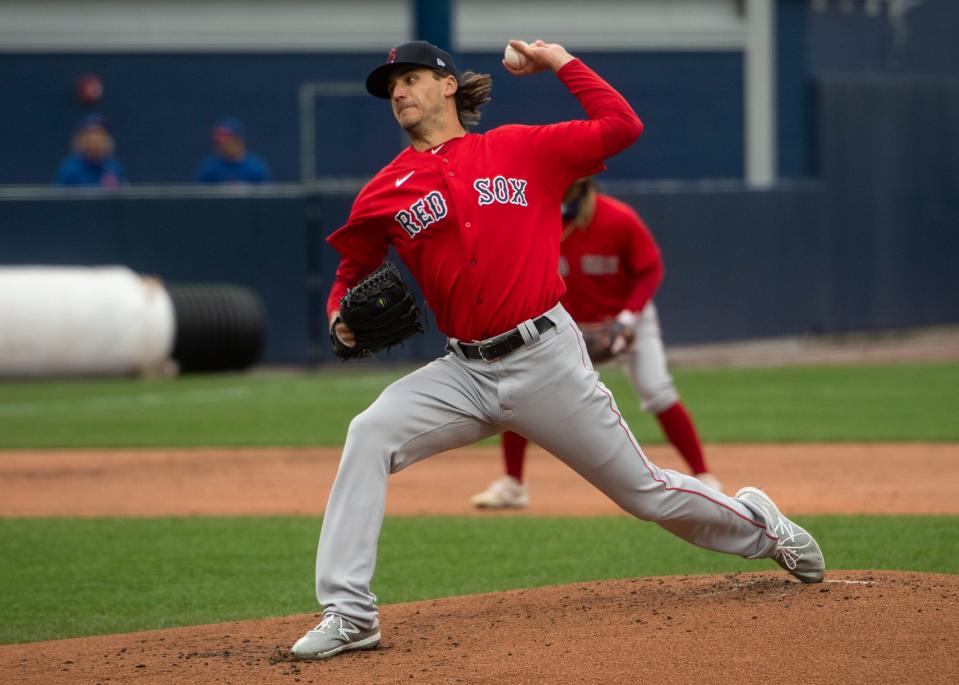Rule changes have come to Minor League Baseball - how did the players and coaches react?

WORCESTER — WooSox pitcher Darwinzon Hernandez tossed an eight-pitch immaculate inning.
Yes, you read that correctly. The left-hander needed only eight pitches to record the elite accomplishment during Saturday’s WooSox game against the Lehigh Valley IronPigs at Polar Park.
Minor League Baseball’s new pace-of-game rules went into effect Friday, and even though it’s a small sample size, it seems to be working. Due to Thursday’s rainout, the WooSox had a doubleheader Friday with a pair of seven-inning games, lasting 2:04 and 2:20, respectively.
Worcester’s 13-1 victory Saturday lasted 2:40. The series finale Sunday was 3:38. It didn’t help Sunday’s pace that the WooSox produced a five-run inning, before Lehigh Valley posted a nine-run inning en route to a 19-11 win.
There were a total of nine violations in the those three games.
After Friday’s games across Minor League Baseball, Baseball America reported Saturday the new rules cut more than 25 minutes from the average game time.
Hernandez struck out the side (all looking) in the top of the second inning. He was awarded a pair of automatic strikes because the batter was not in the box within the appropriate time frame.
Also during Saturday’s game, WooSox slugging first baseman Triston Casas was already 3 for 4 when he stepped into the box in the bottom of the eighth inning. He crushed two balls, pulling both foul, and was clearly dialed in during the at-bat. However, the pitcher was given a violation, which resulted in an automatic ball, giving Casas a free pass.
“As we’ve gone through the process, MLB has been very open to feedback, and I think they’ll continue to ask for that, and I’ll be ready to give my feedback on it,” WooSox manager Chad Tracy said. “I want Darwinzon to actually throw the pitches. He needs to because that’s why he’s here. I want Triston Casas to actually swing the bat. ... I wanted him to swing right there, and I think fans probably did, too.”
Players believe it’s instances like those two when maybe the umpires could use subjectivity to allow those situations to play out as it should.
“Seems like a race,” WooSox pitcher Kyle Hart said of the new rules.
Here are the specific rules the players and managers are focused on now:

14- or 19-second timer between pitches
Except for the first pitch of an at-bat, the pitch timer will count down from 14 seconds with no runners on base, and 19 seconds with runners on base. The batter must be in the box and alert to the pitcher with at least nine seconds remaining.
WooSox outfielder Rob Refsnyder, who has six years of MLB service time, believes the new MiLB rules are working in the early return.
“I’m so used to three-hour plus games, or four-hour games, so 2:40 with 15 hits is pretty fast,” Refsnyder said. “It was definitely weird getting into the box faster, and you’re very conscious of nine seconds.”
Hart explained it’s difficult to shake off a catcher’s sign, while also watching the clock tick away and then being forced to throw a pitch he doesn’t want to deliver.
“That should never happen,” he said. “I should never have to throw a pitch I don’t want to throw because of a time rule. There were multiple times (Saturday) when I had to throw what Connor (Wong) called, even though I didn’t want to. When it starts getting that involved in the game, it’s a problem.”
Hart’s solution is to re-evaluate the time allotment. Instead of 14 and 19 seconds, maybe 20 and 25.
Pickoff and step-offs
After two disengagements from the rubber, the next disengagement must result in an out; otherwise it’s a balk.
“It’s suspect,” Hart said. “What is the step-off rule doing? How many games have you been to when a pitcher is stepping off five, or six times. If they are, it’s quick to try to catch their breath, or wipe sweat off. No one is taking 30, or 40 seconds.”
Hart explained what happens if he steps off twice, but then suddenly a bug flies into his eye and he needs to step off again. By the rule, it’s a balk. Plus, it allows a base runner to get a better jump, knowing the pitcher is unlikely to throw over after two disengagements.
Batter requesting timeout
During each plate appearance, a batter shall be allowed to request time only once. If the umpire grants timeout, the batter shall not be permitted further requests during that at-bat. When timeout is called, the timer shall stop and restart at 14 seconds (bases empty) or 19 seconds (runners on base) when the pitcher is in possession of the ball and the batter is in the box.
The WooSox’ Jarren Duran, who returned to the lineup Sunday after being sidelined due to COVID-19, was given an automatic strike before seeing a pitch to lead off the bottom of the first inning. Duran stepped into the box, took a couple of practice swings, but stepped out for the violation.
It’s only three games across the MiLB landscape, and the lines of communication will be open between teams and the league. In the case of a rehabbing MLB pitcher, like Sunday with Red Sox’ Josh Taylor starting for the WooSox, the pitch clock is not used.
Of course pitchers don’t like the new rules, but everyone else seems to.
“I don’t think the pitchers like it too much,” Hart said. “The sample size is awful small to make a judgment, although I don’t think it’ll take much longer to come to a full-blown conclusion. It’s just really tough on us.”
Hart believes a bigger sample size will show that the new rules will negatively impact pitchers more than batters.
“I don’t mind the pitch clock idea. It’s a good one,” admitted Hart. “You just saw a pretty offensive game in less than three hours. It’s working, but it needs to be fair to us.”
—Contact Joe McDonald at JMcDonald2@gannett.com. Follow him on Twitter @JoeyMacHockey.
This article originally appeared on Telegram & Gazette: Rule changes have come to Minor League Baseball - how did the players and coaches react?

